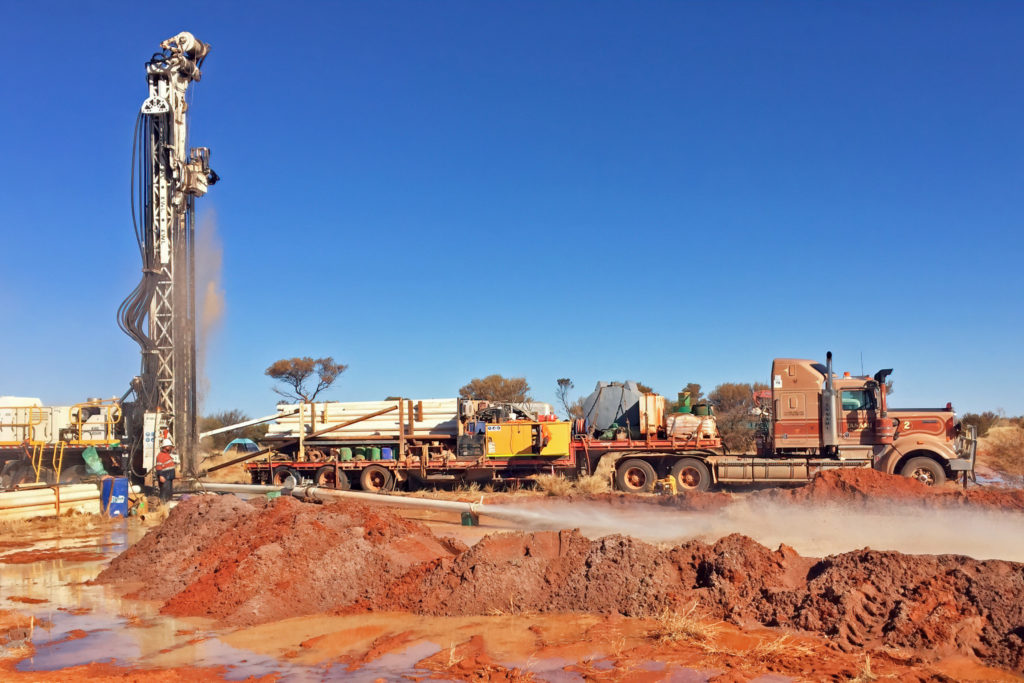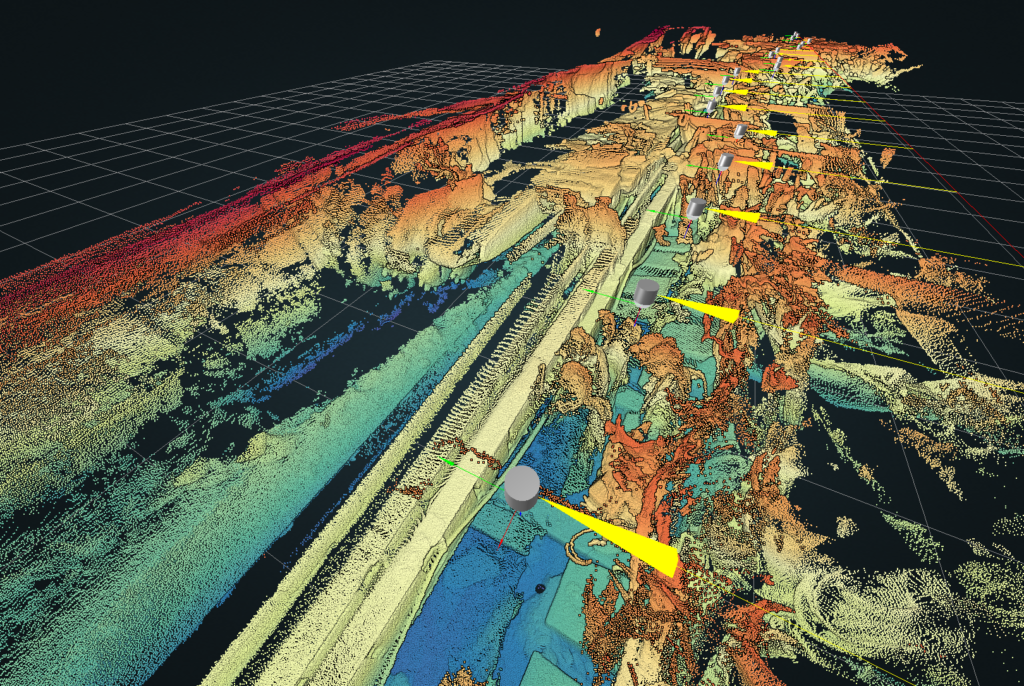In a year with its challenges, ups and downs, and everything in-between, there was a lot to keep up with. Especially COVID-19 stories. Here are some of our great science stories you may have missed during the year. From liquid gold in the desert to a digital human for the Olympics, here are some of our brilliant (and less visible) science news from 2021.
1. Liquid gold in the desert
We uncovered an ancient and lost buried water source in the Aṉangu Pitjantjatjara Yankunytjatjara (or APY lands) of South Australia.
The collaboration, which took place over a decade, unearthed large palaeovalley systems buried underground. During this time, the team investigated the role large buried palaeovalley systems can play as a potential groundwater resource. Where summer temperatures can soar high into the 40s and rainfall averages only 230mm per year, this ancient resource could provide to be invaluable. The local community and APY Executive Board were supportive of the project which is ongoing.

Drilling in the palaeovalley. APY lands, South Australia. Image credit: Carmen Krapf.
2. Commercialisation in action: three success stories
We shone the light on three commercialisation success stories belonging to our portfolio of mineral resources research and technology development. Chrysos, NextOre, and Lasc ExScan are commercial innovations with global application, developed by us.
In June 2021, Chrysos announced it had completed analysing one million samples using its breakthrough photo assay technology. This innovation was recently recognised as part of our 2021 CSIRO Awards.
NextOre’s magnetic resonance technology enables step-change productivity gains and significant water and energy savings. And our Lasc ExScan technology is helping improve safety across longwall mine sites. This improvement is credited to its innovative use of remote-guidance technology to steer machinery.

An image generated using our ExScan technology in an underground mine.
3. Taking SWIRLFLOW® and beyond to the world
SWIRLFLOW® has a very cool name and an even better industry application. Used in mineral processing around the world, SWIRLFLOW® is a proud piece of our technology.
Its industry value lies in its novel design to replace traditional agitators inside mineral refineries’ large mixing tanks. These agitators can often have problems. Bogged equipment can lead to shutdowns, expensive clean-ups, and dangerous repairs are some examples.
Saving time and costs while generating revenue, we hope SWIRLFLOW® becomes the industry standard in alumina refineries.
4. Motherboards as mother lode
One tonne of mobile phones contains up to 100 times more gold than a tonne of gold ore. If you consider our ever-increasing consumption of mobile phones, that’s a large amount of valuable metal waiting to be recovered.
Biomining is one possible solution to recover resources found in e-waste. But it wouldn’t be a great science story without a twist. It involves using – you guessed it – microbes. Bacteria and fungi, as it turns out, can recover different metals. About five per cent of the world’s gold is mined this way. And thanks to a recent grant, our researchers are investigating how they can leverage biomining to recover metals from printed circuit boards (PCBs).

Prof Sally Cripps, Research Director of CSIRO’s Data61’s Analytics and Decision Sciences program.
5. Get to know Professor Sally Cripps
Professor Sally Cripps became the Research Director of our Analytics and Decision Sciences program within Data61 in August. Here, we sat down with Sally to talk about all things data science, artificial intelligence, women in tech, and much more.
In her interview, Sally offered advice for girls or women pursuing a career in technology: “Give it a go. Don’t be afraid to fail. If it seems like a good idea at the time, have a go and even if you fail, that’s okay. Pick yourself up and do it again.”
6. Quasar takes off with our tech
Quasar Satellite Technologies is a startup company that will be using our technology to speak with hundreds of satellites in space at once.
With the number of satellites in the sky increasing we need to be able to communicate to them all from Earth. Previously, one ground station would talk with one satellite in a one-to-one communication system. But as time and demand have gone on, this system no longer cuts it.
And so this is where Quasar comes in. Adapting our phased array technology, they can create ground stations that are capable of communicating with hundreds of satellites simultaneously.

Swept-back gas from this large galaxy in the Abell galaxy cluster system indicates that it is moving. Image credit: Veronica et al.
7. Galaxies headed for collision
Data from our ASKAP radio telescope helped show an intergalactic highway that groups of galaxies travel along – and they’re travelling towards each other. Though theoreticised, it had never been confirmed by visual data from space.
From our vantage point on Earth, we can see that galaxies tend to exist in groups, clumps, or clusters. The Milky Way is part of a group of galaxies called the Local Group (because it’s, well, local).
The international team using SRG/eROSITA, XMM-Newton and Chandra satellites, the ASKAP telescope, plus DECam optical data, focused on the Northern Clump in the Abell Galaxy Cluster, 690 million light-years away. They detected a galaxy with a large black hole in its centre that had energised galactic dust streaming out behind it – like a girl in pigtails running across the playground. This proved that that galaxies are moving against an intergalactic wind. This discovery further supports existing theories of the origins and evolution of the universe.

3D printed silicone has great potential. And researchers expect the Global Silicone Market to reach $91.4 Billion by 2026.
8. 3D printed silicone
This year we developed a revolutionary 3D printed silicone. If you’ve seen the 1990s movie Flubber, cast your mind to the bouncy, stretchy substance Robin Williams creates.
Our ‘Flubber’ is a tough and super soft resin, which makes it great for printing biomedical parts. Off-the-shelf 3D printers can use our resin formula, which is another first for the product. And for one last spruik of our invention, our silicone resin is also a fantastic superglue for glass and metal.
So we’re sure it will be sticking around.

The sea pig is another denizen of the deep. It was found in the Coral Sea Marine Park during the 2017 Sampling the Abyss voyage. Depth 1761-1770 m. Image credit: Asher Flatt.
9. Denizens of the deep
What magical and mysterious creatures lie deep in our ocean below? With RV Investigator on the mission, this year we discovered some of the amazing life forms that occupy the far depths of the continents surrounding oceans.
One discovery from the deep is the Sea Pig (Oneirophanta mutabilis mutabilis) pictured above. This curiosity was found at a depth of just over 1700 metres. The Sea Pig is a type of sea cucumber that is known as the vacuum cleaners of the sea as they hoover up microorganisms and bits of dead organisms as they travel.
Lastly, many creatures found on the trip are new to science and play an important role in understanding and then protecting our precious marine environment.
10. Digital Humans and performance analysis
Our talented Data61 team developed Digital Humans. Digital Humans are a detailed replica of a person or part of a person and their environment.
Being able to test and model a physical movement without needing someone to do it in real life has great applications. These applications include improving physical performance, predicting physical strain, and increasing workplace safety. Australian divers used Digital Humans to refine their technique for the 2016 Rio Olympics as one example.
In addition, you can use Digital Humans in the workplace to replicate a physical task that may cause injury or strain. Through these simulations, we can make these tasks safer all without someone having to test them in the real world.


7th January 2022 at 5:18 pm
Yep!
24th December 2021 at 7:33 pm
Thanks for collating these. Some great work being carried out here.